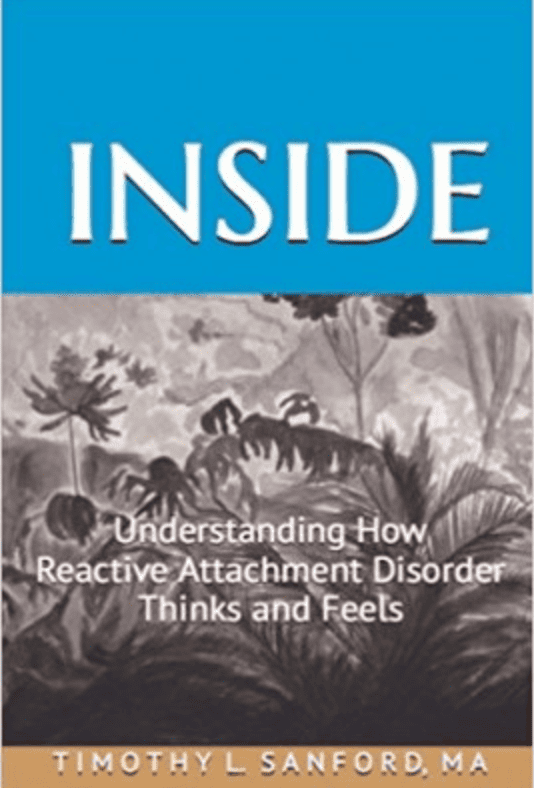
Looking Beyond Behavioral Issues
Behavioral issues can be incredibly consuming and overwhelming, to say the least! In working with families, I always remind parents that they are not alone in facing these difficulties. These
Urgent Need: As the back-to-school season begins, families are facing mounting pressure—tough choices, cultural confusion, and strained relationships.
Will you make a gift before August 31 to help provide Christ-centered support in this critical season?

Parenting reactive children or youth can be difficult but a technique known as Therapeutic Parenting can be helpful.
Trying to correct a child’s behavior when she’s screaming and throwing a tantrum can un-nerve the most patient adult. Parenting reactive children or youth who are routinely challenging parents through their actions or speech may require a specific technique. Therapeutic parenting is the preferred approach when working with a child or young person who has a reactive brain. Please note that reactivity may be seen in young children, adolescents and teenagers. Therefore strategies for intervening with reactive kids of different ages are provided in this article. However, the needs of the reactive child will be pretty much the same, regardless of age.
Therapeutic parenting was pioneered by the late Dr. Karyn Purvis as part of Trust Based Relational Intervention (TBRI). Therapeutic parenting is a way to parent a child who is highly reactive. Your child’s behavior becomes a clue to what’s going on in his brain.
Therefore, as you address his brain’s needs in order to help him feel safe, he’ll be less likely to react in negative ways. In short, you’re parenting his reactive brain rather than simply confronting his negative behavior. Because of this, therapeutic parenting takes extra time and intentionality. Dealing with your child’s tantrum or adolescent’s emotional outbursts may take a few minutes or up to several hours. Depending on your child’s history, using therapeutic parenting will take between six months to two years of repetitive intervention. This is necessary to get your child to the place where traditional parenting techniques may work. This is because you’re helping his brain to “heal” not just working to change his behavior.
The TBRI process of parenting reactive children or youth focuses very intentionally on connecting with them. The purpose of connecting is to disarm any anxiety, fear or lack of trust. Also, you calm their reactive brains so they can stop the unwanted behavior of their “Downstairs Brain”. Instead, you help them learn how to act appropriately and use their “Upstairs Brain”. Only then can they process what you’re trying to say as you correct their behavior.
Connecting begins with a child’s perception of feeling safe both environmentally and emotionally. This may sound obvious, but with a child or adolescent who can be reactive, don’t assume he will feel safe. Make sure your home environment is conducive to meeting his daily physical and sensory processing needs. When your child or adolescent reacts with a negative behavior, remove any objects he can use to harm himself or you. Remember, if his brain doesn’t “think” he’s safe, he will most likely react with an unsafe outburst of actions or his words. So, be sure he can’t harm himself or you. When parenting reactive children and youth, your safety is just as important as theirs.
Connect with a reactive child in a light-hearted, silly or surprising way; “Whoa Nellie …” or “Oopsy, let’s try that again.” Or, you might be more directive with an adolescent and calmly say something like, “Stop, you’re not being safe.” Then, follow up with, “What do you need to feel safe right now?
Physically connect with a young child. Get down on his eye level; ask to see his eyes. Next, if he’ll let you, have him place his hands in yours or place your hand on his shoulder. Talk in a calm up-beat voice. Your child learns best in a playful fun setting where he doesn’t feel threatened. The same is true for adolescents so if possible, touch a hand or shoulder when talking to a reactive preteen or teenager. However, if a teen won’t let you touch him, don’t force it. Give him the space he needs to feel safe. In therapeutic parenting, connecting helps your child feel like you’re with him rather than against him. Be sure you make the connection before proceeding.
If your child or adolescent is able to connect with you, give him time to calm down. Then, have him do a “do-over.” Parenting reactive children or youth takes patience and persistence so do-overs are a common practice in therapeutic parenting. A do-over is redoing the action or restating the conversation this time with the appropriate behavior or words. Also, a do-over is a powerful training technique sports coaches use with their athletes even at the professional level. So, having your child or adolescent act out the desired behavior or say the appropriate words is really helpful. This reprograms the pathways in his brain and increases the chances of the positive behavior happening next time.or adolescent
If your child can’t connect with you or she isn’t able to calm down, empower her. Give her a choice between two acceptable options. By doing this, she’ll feel less “in trouble,” scared and defensive if she has a choice in the interaction. When she’s scared, she’s unable to hear what you’re trying to teach her anyway. So, ask her, “Would you like to wear your sneakers or your snow boots?” Options empower by giving her control in the moment. When she feels “in control,” she’ll likely feel safe and more likely to cooperate. Choosing is a mental exercise that moves her from her reactive “Downstairs Brain” to her thinking “Upstairs Brain.”
If you think you’re giving up control and allowing your child to have all the control, you’re not. Remember, in therapeutic parenting, you control which two options to offer and give her the opportunity to choose. Additionally, you control seeing she gets the option she chose. Therefore, you’re allowing her to have some control over the situation. However, at the same time you’re retaining the rightful control you have as the parent.
If she is able, allow her to make her choice and follow through. Then, you can go back and connect with her and have her do a “do-over.” If she can’t choose either of the two options you presented, work at calming your child.
Meet the sensory needs of your child by using sensory processing tools. These include fidget toys, a blanket, a sweet or salty snack or dimming the lights for young children. Soothing music and soft pillows might work well for the reactive adolescent. Also, you might try reducing the noise level or going to a “safe place” in her room or elsewhere in the house. This calming process can be the most time-consuming part of therapeutic parenting. That’s OK. Take the time your child needs to become calm again. Once your child is calm and can use her words appropriately, connect with her and have her do a “do-over.”
Once you’ve connected with your child and he’s calmed down and feels safe, you redirect his behavior. When parenting reactive children or youth, “correcting the behavior” is done through the “do-over” process. Therefore, have your child or adolescent act out the appropriate behavior or communication. If the first “do-over” attempt is not acceptable, thank him for listening to you and trying. Then, offer another calming sensory item and allow for another “do-over.” Focus on the desired action and language even if an appropriate attitude is lacking. You’re not looking for perfection, just acceptable and appropriate behavior—even if it’s barely acceptable. Working on his attitude behind the behavior or language can be addressed once the pattern of reactivity has diminished.
Note that this “do-over” technique is correcting the negative behavior. However, you’re correcting the unwanted behavior not with a lecture, but with actions—his actions. Your child is acting out the desired behavior or using his appropriate language. In therapeutic parenting, this experiential learning is training the neuropathways in his procedural memory. For a child in his reactive “Downstairs Brain” this is immensely more effective than a conversation with him.
Remember, a therapeutic parenting episode may take from two minutes to several hours depending on your child and her age. Yes, several hours. Therefore, parenting reactive children or youth requires you to be ready and be patient. Also, you need to keep your cool and remember, you’re parenting a reactive brain not (just) the unwanted behavior.
Do you need help finding a trained Christian counselor who specializes in family attachment therapy and therapeutic parenting? Do you need help with parenting a reactive child? If so, your family pediatrician may be able to recommend a good fit. If not, Focus on the Family’s Counseling department can provide referrals to qualified professionals in your area. Call us for a free phone consultation.
You can get more information about the therapeutic parenting model developed by the late Dr. Karyn Purvis. This method is called Trust Based Relational Intervention. Visit the webpage of TCU’s Karyn Purvis Institute of Child Development for a free one-hour “Introduction to TBRI” video. You can find other resources through their online store.

Bring hope and healing to your family.

Understanding how reactive attachment disorder thinks and feels.
©2019 Focus on the Family





Tim Sanford is a licensed professional counselor and the Clinical Director of Counseling Services for Focus on the Family’s counseling department. He is also a pastor, a public speaker and the author of several books, the most recent being Forgive for Real: Six Steps to Forgiving. Tim and his wife Becky have two grown daughters and reside in Colorado.

Behavioral issues can be incredibly consuming and overwhelming, to say the least! In working with families, I always remind parents that they are not alone in facing these difficulties. These

Having a wild child can bring the eyes of judgment in every aisle of the grocery store. More discipline is not always the best answer. Explore how love, respect, grace, and forgiveness can equip you as you respond to your wild child.

Christian comedian Chonda Pierce struggled with depression. But through that process, she learned that feelings are temporary. And she started to lean more on what she knows and less on what she feels.